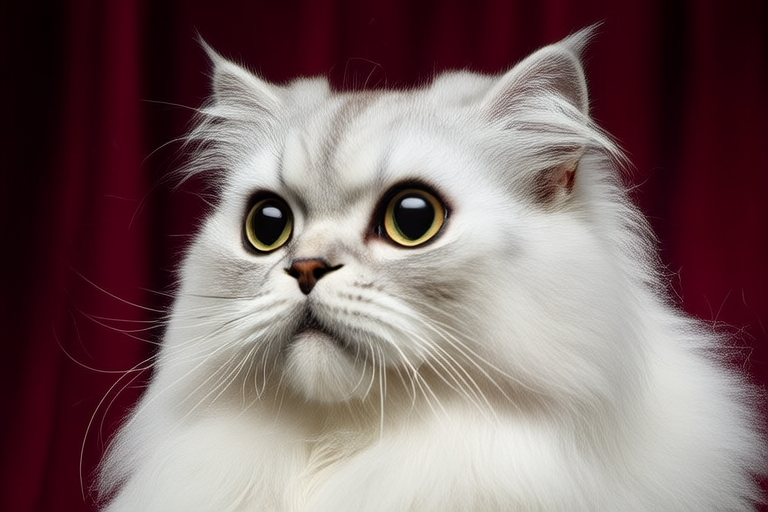Myths and Realities Surrounding Persian Cats
Persian cats have long been a symbol of elegance and grace. Their luxurious coats, serene demeanor, and gentle nature make them one of the most popular breeds among cat enthusiasts. However, there are many myths and misconceptions surrounding this breed that can confuse potential owners. This article aims to explore the history, physical traits, grooming needs, temperament, health issues, and popular misconceptions surrounding Persian cats.
The Origins of Persian Cats
The origins of Persian cats are somewhat shrouded in mystery. Historians believe they originated in Persia, now known as Iran, and were brought to Europe by traders and diplomats in the 16th and 17th centuries. The breed gained popularity during the Victorian era when Queen Victoria owned several Persians, and the breed was featured in cat shows. Over time, selective breeding has resulted in the distinct physical characteristics associated with modern-day Persian cats.
Distinctive Physical Traits
Persian cats are easily recognizable by their long, luxurious coats, flat faces, and round eyes. Their coat comes in a wide variety of colors and patterns, including solid colors, tabby, bicolor, and colorpoint. The breed’s distinctive facial structure is a result of selective breeding, which has led to some health issues, such as breathing difficulties and eye problems. Despite these challenges, Persian cats remain a favorite among cat lovers for their striking appearance.
Grooming Needs
One of the most significant challenges of owning a Persian cat is their extensive grooming needs. Their long, thick coats require daily brushing to prevent matting and hairballs. Many owners find it necessary to brush their cat’s coat twice a day, especially during shedding season. Professional grooming services may also be required to keep their coat in top condition. While this level of grooming can be time-consuming, many owners find it rewarding to care for their pet’s luxurious coat.
Temperament and Compatibility
Persian cats are known for their gentle and affectionate nature, making them an excellent choice for families with children. They are generally calm and quiet, preferring to spend their time lounging around the house rather than being overly active. Persian cats are often described as “lap cats” due to their love of cuddling and being close to their owners. However, they can be somewhat aloof and independent at times, requiring patience and understanding from their human companions.
Health Issues
Despite their beauty, Persian cats are prone to several health issues, including respiratory problems, dental issues, and kidney disease. Their flat faces can lead to breathing difficulties, especially during hot weather or after physical exertion. Regular dental checkups are essential to maintain their oral health, as Persian cats are more susceptible to dental problems than other breeds. Kidney disease is another common issue, particularly in older cats, so regular veterinary checkups are crucial to catch any potential health problems early.
Common Misconceptions
One of the most common misconceptions about Persian cats is that they are less intelligent than other breeds. This belief stems from their calm and laid-back demeanor, but it is far from accurate. Persian cats are highly intelligent and capable of learning tricks and commands. Another misconception is that they are not suitable for active households. While Persian cats are not as energetic as some other breeds, they still enjoy playtime and mental stimulation. Providing them with interactive toys and puzzles can help keep them engaged and mentally sharp.
Insights from Cat Experts
To gain further insight into the world of Persian cats, I spoke with Dr. Emily Thompson, a veterinarian with over 20 years of experience working with cats. She emphasized the importance of proper nutrition and regular veterinary care in maintaining a Persian cat’s health. “Persian cats require a high-quality diet rich in protein and essential nutrients to support their long, luxurious coats,” she explained. “Regular checkups and preventive care can help catch any potential health issues before they become serious.”
Dr. Thompson also shared her own experiences with Persian cats. “I’ve had several Persian cats throughout my career, and each one has been unique in its own way,” she said. “While they may require more grooming and care than some other breeds, their gentle nature and affectionate personalities make them wonderful companions. It’s important for potential owners to be prepared for the commitment involved in caring for a Persian cat.”
Personal Anecdotes
As someone who has owned a Persian cat for several years, I can attest to the joys and challenges of caring for this breed. My cat, Luna, is a beautiful silver tabby with a stunning coat. Her grooming routine takes up a significant portion of our daily routine, but I wouldn’t trade it for anything. Watching her coat gleam in the sunlight and seeing her snuggle up for a nap on my lap makes all the effort worthwhile.
Luna is a calm and gentle companion, always ready for a cuddle or a game of fetch with her favorite toy. While she may not be as active as some other breeds, she still enjoys playing and exploring her surroundings. One of my fondest memories with Luna is watching her chase a laser pointer around the room, her eyes shining with excitement. These moments of playfulness remind me of her playful side, which is often overlooked in discussions about Persian cats.
Conclusion
Persian cats are a beautiful and beloved breed with a rich history and distinctive physical traits. While they may require more grooming and care than some other breeds, their gentle nature and affectionate personalities make them wonderful companions for families and individuals alike. By understanding the myths and realities surrounding Persian cats, potential owners can make informed decisions about whether this breed is right for them. With proper care and attention, Persian cats can live long, healthy, and happy lives, bringing joy and companionship to their human families.
